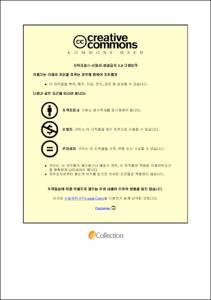Modeling and Prediction of Machining Parameters in Turning Operation using RSM, ANN and Particle Swarm Optimization
- Abstract
- This study presents modeling, analysis, optimization and prediction of turning process of low carbon steel. The input parameters used are cutting speed, feed rate and depth of cut. The experiments were carried out under various conditions, three levels of each input parameters and two different treatments for each level, and obtain the surface roughness and electric current consumption which are the output parameters. The experimental data was used to develop the mathematical model using response surface methodology (RSM), and the relationship between the input parameters and the output parameters is determined. Also the prediction of output parameters using artificial neural network with back propagation (NN_BP) and artificial neural network with particle swarm optimization (NN_PSO) is performed. The data for experiments is used to train the NN_BP and NN_PSO to update the weighs in neural network. After training, the neural network model are runned using test data and the results using NN_BP and NN_PSO are compared with each other. The result shows that for turning with lubricant at 300 iteration, the NN_PSO is better than NN_BP. At 1200 iteration, NN_BP is better than NN_PSO for the surface roughness, but NN_PSO is better than NN_BP for electric current consumption. For turning without lubricant at 300 iteration, NN_BP is better than NN_PSO. At 1200 iteration, for surface roughness the NN_PSO is better than NN_BP, but for electric current consumption NN_BP is better than NN_PSO.
- Issued Date
- 2015
- Awarded Date
- 2015. 8
- Type
- Dissertation
- Publisher
- 부경대학교 시스템경영공학과
- Affiliation
- 부경대학교 시스템경영공학과
- Department
- 대학원 시스템경영공학과
- Advisor
- 오수철
- Table Of Contents
- Chapter 1 Introduction……………………………………………… 1
1.1 Background and purpose of research …………………….. 1
1.2 Contents of research ………………………………….….. 3
Chapter 2 Literature Review……………………………………….. 5
2.1 Turning ………………………………………………........ 5
2.2 Response surface methodology………………………........ 5
2.3 Artificial neural network ……………………………........ 8
2.3.1 The artificial neuron………………………………… 9
2.3.2 Activation functions………………….…………….. 10
2.3.3 Structure of artificial neural network……………….. 12
2.4 Back propagation training ………………………….……… 14
2.4.1 Training……………………………………………... 17
2.4.2 Adjusting the weights of output layer………………. 17
2.4.3 Adjusting the weights of the hidden layer…………… 19
2.5 Particle swarm optimization……….……………………...... 21
Chapter 3 Methodology………………………….…..……………..…. 24
3.1 Experimental details……………………………………….. 24
3.1.1 Work material, machine, and equipment……………. 24
3.1.2 Plan of experiments………………………………… 26
3.2 Modeling and analysis………………………....................... 27
3.3 Prediction and validation…………....................................... 28
Chapter 4 RSM for Modeling, Analysis and Optimization
in Turning Operation……………………………….…… 29
4.1 Modeling of machining parameters using the response
surface methodology……………………….……………… 30
4.1.1 Turning with lubricant……………………….……… 30
4.1.2 Turning without lubricant………………….………... 33
4.2 Effects of the input parameters…………………..………… 39
4.2.1 Effects of the input parameters on
the surface roughness with lubricant…………….….. 39
4.2.2 Effects of the input parameters on the electric
current consumption with lubricant………………..…. 42
4.2.3 Effects of the input parameters on the surface
roughness without lubricant………………………… 45
4.2.4 Effects of the input parameters on the electric current consumption without lubricant…………………….. 48
4.3 Optimization………………………………….……….…… 51
4.4 Discussion……………………………………………..…… 53
Chapter 5 Prediction using ANN with Back Propagation and PSO in Turning Operation…………………..…………………… 54
5.1 Artificial neural network …………………………………... 54
5.2 Back propagation neural network model…………………… 54
5.3 Particle swarm optimization neural network model………… 56
5.4 Training artificial neural network with back propagation
under treatment with lubricant ……………………...……… 56
5.4.1 Comparison of graphical results………………………. 61
5.5 Training artificial neural network with particle swarm optimization under treatment with lubricant……..…………. 64
5.5.1 Comparison of graphical results………………………. 67
5.6 Artificial neural network validation for turning
with lubricant………………………………………………… 70
5.7 Training artificial neural network with back propagation
under treatment without lubricant…………………………… 72
5.7.1 Comparison of graphical results………………………. 76
5.8 Training artificial neural network with particle swarm
optimization under treatment without lubricant……….…… 79
5.8.1 Comparison of graphical results………….…………. 82
5.9 Artificial neural network validation for turning
without lubricant…………………………………………… 85
5.10 Discussion………………………………………………… 86
Chapter 6 Conclusion and Future Research………………….….….. 88
6.1 Conclusion………………………………………………..… 88
6.2 Future research……………………………………………… 90
Reference……………………………………………………..………… 91
Appendices…………………………………………………….……….. 94
Abstract………………………………………………………………… 111
Korean Abstract……………………………………………………….. 112
Acknowledgment………………………………………………………. 113
- Degree
- Doctor
- Files in This Item:
-
-
Download
 Modeling and Prediction of Machining Parameters in Turning Operation using RSM, ANN and Particle Swa.pdf
기타 데이터 / 5.1 MB / Adobe PDF
Modeling and Prediction of Machining Parameters in Turning Operation using RSM, ANN and Particle Swa.pdf
기타 데이터 / 5.1 MB / Adobe PDF
-
Items in Repository are protected by copyright, with all rights reserved, unless otherwise indicated.